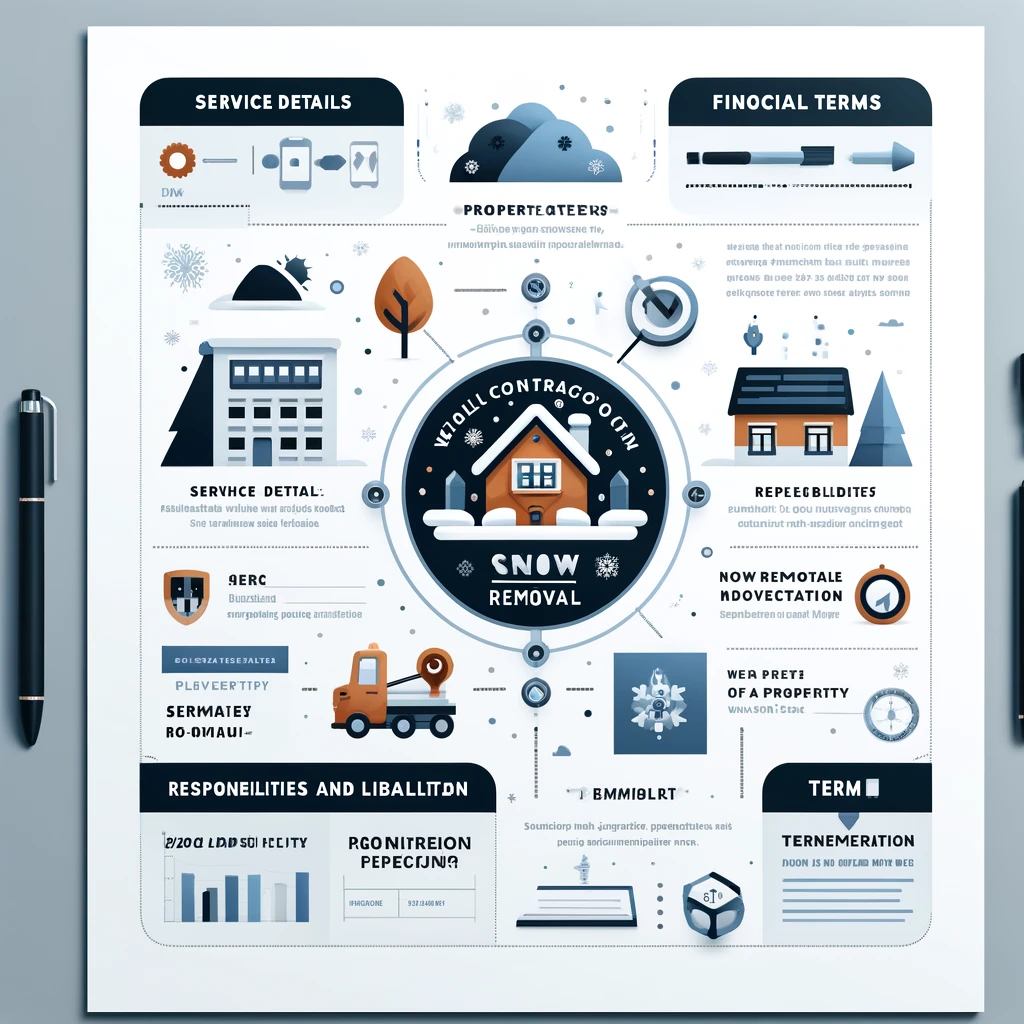Essential Guide to Snow Removal Contracts: Ensuring Clarity and Efficiency
As winter approaches, the importance of having a reliable snow removal contract becomes increasingly apparent for property owners and managers. Whether you're responsible for a residential driveway or a commercial parking lot, a well-drafted snow removal contract ensures that you're adequately prepared for whatever the winter months bring. This comprehensive guide delves into what makes an effective snow removal contract, highlighting legal considerations, key components, and best practices for drafting an agreement that meets your needs.

Understanding Snow Removal Contracts
A snow removal contract is a legally binding agreement between a property owner (or manager) and a service provider, outlining terms and conditions under which snow removal services will be provided. These contracts are essential for ensuring timely and efficient snow removal, reducing the risk of accidents, and maintaining accessibility during snowy and icy conditions.
Legal Framework
The enforceability and specifics of snow removal contracts can vary by jurisdiction, making it crucial to understand local laws and regulations. For instance, certain states or municipalities may have specific requirements regarding snow removal timelines, disposal methods, and environmental considerations. Websites like the U.S. Environmental Protection Agency and state government portals can provide valuable information regarding relevant local regulations.
Crafting a Snow Removal Contract: Key Components
Service Details
Scope of Work: Clearly define the areas to be serviced (e.g., parking lots, sidewalks, entrances) and the specific services provided (e.g., plowing, shoveling, salting).
Service Trigger: Specify the conditions under which snow removal services will be initiated, such as snow accumulation beyond a certain depth.
Service Hours: Outline the hours during which services will be provided and any provisions for emergency or after-hours services.
Financial Terms
Pricing Structure: Detail the payment structure, whether it's a fixed seasonal fee, a per-incident charge, or based on the amount of snow removed.
Payment Schedule: Specify payment terms, including due dates, acceptable payment methods, and late payment penalties.
Responsibilities and Liabilities
Client Responsibilities: List any obligations of the property owner, such as marking obstacles or ensuring gates are unlocked.
Provider Liabilities: Define the service provider's liability, including insurance coverage and any limitations to liability for damages.
Dispute Resolution: Include mechanisms for resolving disputes related to the contract or services provided.
Term and Termination
Contract Duration: State the start and end dates of the contract, typically aligned with the winter season.
Renewal and Termination: Outline conditions under which the contract will be renewed or terminated, including notice requirements.
Best Practices for Property Owners and Service Providers
Conduct Due Diligence
Both parties should conduct thorough due diligence before entering into a contract. For property owners, this means verifying the service provider's credentials, insurance coverage, and references. Service providers should assess the property to understand the scope of work fully.
Customize the Contract
Avoid one-size-fits-all contracts. Tailor the agreement to the specific needs and circumstances of the property and the services provided. Utilize resources like Wikipedia for general information on snow removal practices and tailor your contract accordingly.
Include Quality and Performance Standards
Specify expectations for service quality and performance, including timeframes for service completion following a snow event. This helps ensure that services are performed to a satisfactory standard.

Create & Review Your Contracts 10x Quality and Ease
Lawyer-level AI handles all your contract needs, with real lawyers providing safeguarding support

Regular Communication
Maintain open and regular communication between the property owner and the service provider. This can help address any issues promptly and adjust services as needed based on changing weather conditions or property needs.
Conclusion
A well-drafted snow removal contract is essential for ensuring that properties remain safe, accessible, and compliant with local regulations throughout the winter season. By incorporating the key components outlined above and following best practices for drafting and negotiation, property owners and snow removal service providers can establish a mutually beneficial agreement that stands up to the challenges of winter weather.
Remember, the specifics of snow removal contracts can vary widely based on local laws and individual property needs, so consulting with a legal professional or referring to authoritative .gov and .edu sites for guidance is always advisable.

